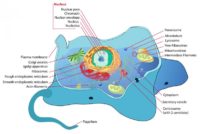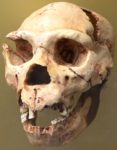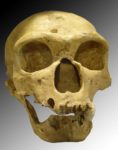By Sarah Chaffee On this episode of ID The Future from the vault, Biologic Institute’s Dr. Richard Sternberg explains what a gene is, how it works and how our understanding of genes and DNA has changed over the years. He also discusses the growing number of discoveries that are overturning the notion of junk DNA. Please consider donating to support the IDTF Podcast. Your browser does not support playing Audio, please upgrade your browser or find our podcast on podOmatic Download Episode …read more Source: id the future
By Sarah Chaffee On this episode of ID the Future, host Mike Keas talks with Sean McDowell about his book Understanding Intelligent Design: Everything You Need to Know in Plain Language, co-authored with William Dembski and released ten years ago. Sean talks about changes over the past ten years: Everyone has a smartphone and can, quicker than ever, find someone taking the other side of an argument, and many young people are trusting feelings more and science less. But some things haven’t changed, Sean argues: ID isn’t just good science, it’s good common sense. It just needs to be explained [More]
As I write this article, there have been reports about the imminent extinction of the vaquita, a little porpoise that lives in Mexico’s Gulf of California. In 2016, it was estimated that there were only 30 of these small marine mammals left, whereas 97 were counted in 2014. read more …read more Source: Creation Moments
In Genesis 12:5, we read about Abram leaving Haran. Among his party were people acquired in Haran, as the NKJV, ESV, and CSB versions put it. The KJV and the earlier Geneva Bible refer to the ones taken from Haran as “the souls that they had gotten in Haran”. The Hebrew word being translated here is nephesh – a word that refers to the breath of life; an in-pouring of the Spirit. read more …read more Source: Creation Moments
Genesis is one book. That might seem pretty obvious to many of you, and yet sometimes we have given the impression that it is two books. The first book runs from chapter one through chapter eleven. The second is from chapter twelve onward. read more …read more Source: Creation Moments
By Sarah Chaffee On this episode of ID the Future, Steve Laufmann critiques a recent book by Dr. Nathan H. Lents, Human Errors: A Panorama of Our Glitches, from Pointless Bones to Broken Genes. The book purports to show that so-called “design errors” in the human body prove it wasn’t designed. Laufmann describes five ways Lents’ argument is a “bizarre blend of ignorance and arrogance.” For instance, Lents often ignores something basic to engineering–the necessity of design tradeoffs. Please consider donating to support the IDTF Podcast. Your browser does not support playing Audio, please upgrade your browser or find our [More]
There has been a tendency among some evangelicals to worry about scientific opinion. For example, there has been a drive to reinterpret Genesis in the light of evolutionary theory, and, although that drive is decades old, it has accelerated among conservative evangelicals in the last ten years or so. The tendency seems to be to panic whenever a new scientific idea appears that seems to be opposed to the Bible. read more …read more Source: Creation Moments
An article in the New Scientist magazine suggests that the Reformation was a spur to scientific development. In their minds, Luther was a rebel, and it was this attitude of rebellion that led to the free-thinking required for modern science to develop. read more …read more Source: Creation Moments
By Sarah Chaffee On this episode of ID the Future, Dr. Andrew Jones tells about his work on population genetics, with host Sarah Chaffee. Using statistical physics methods, by which, as he puts it, “we’re actually measuring things rather than telling stories,” scientists are refuting theories claiming that there could be no original human pair. These methods can show as well that even if evolution were otherwise possible, it would take much longer than the available time could allow. Your browser does not support playing Audio, please upgrade your browser or find our podcast on podOmatic Download Episode …read more [More]
Comets are fascinating objects. At their best, they can be spectacular objects in the sky, with beautiful tails pointing away from the Sun. read more …read more Source: Creation Moments
In the beginning was Ida, the initial Darwinian ancestor – the first material on Earth to transform from inert to, well, ert. Ida begat Luca, the last universal common ancestor, and the molecule that gave rise to every kind of life on Earth, from lowly bacteria to the giant panda. read more …read more Source: Creation Moments
According to the Encyclopaedia Britannica, animals evolved from unicellular eukaryotes. Eukaryotes are cells that contain a clearly defined nucleus. This membrane enables the two stages (coding and decoding) of protein synthesis to be separated. According to the encyclopaedia, this has enabled different types of cell to evolve to do different jobs. read more …read more Source: Creation Moments
By Sarah Chaffee On this episode of ID the Future, Sarah Chaffee interviews German paleo-entomologist Günter Bechly on the Cambrian explosion, the relatively sudden appearance of new body plans in the fossil record an estimated 550 million years ago. Dr. Bechly explains how the Cambrian explosion has been challenged by non-experts with an anti-ID bias, yet remains very much a real event in the opinion of specialists in the field — and with the continuing failure of Darwinian explanations, a strong source of evidential support for intelligent design. Your browser does not support playing Audio, please upgrade your browser or [More]
The old joke goes: “What’s gray and has a trunk? A mouse on vacation.” Of course, we know that this is really the description of the world’s favorite animal, the elephant. read more …read more Source: Creation Moments
Accounts of the supposed evolution of human beings read like the modern equivalent of fairy stories. These intricate fables often seem to mask the inability to reject evolutionary theories when they come up against unfortunate or difficult facts. read more …read more Source: Creation Moments
By Sarah Chaffee On this episode of ID the Future from the vault, Casey Luskin continues his interview with Biologic Institute director Douglas Axe about his paper, “The Limit of Complex Adaptation: An Analysis Based on a Simple Model of Structured Bacterial Populations,” in BIO-Complexity. Listen in as Dr. Axe reports on the work done at Biologic Institute to test whether amino acids are able to be converted from one function to another in Darwinian step-wise fashion. Please consider donating to support the IDTF Podcast. Your browser does not support playing Audio, please upgrade your browser or find our <a [More]
By Sarah Chaffee On this episode of ID the Future, podcaster and Forbes contributor Jerry Bowyer concludes a conversation with John West about the intelligent design documentary film Revolutionary. They discuss German paleontologist Günter Bechly, who changed his mind about Darwinism after reading a book by the main protagonist of the film, Michael Behe. West also shares a fascinating postscript to that story. And West and Bowyer go on to discuss an upcoming Discovery Institute film, Human Zoos, which explores Darwin-inspired scientific racism in the early 20th century. Your browser does not support playing Audio, please upgrade your browser or [More]
By Sarah Chaffee On this episode of ID the Future, Michael Flannery, historian of science and emeritus professor from the University of Alabama at Birmingham, discusses a little known dustup among Charles Darwin, Alfred Russel Wallace, and the great geologist Charles Lyell. Wallace, the co-discoverer of the theory of evolution by natural selection, eventually concluded that an overruling intelligence must be involved in the history of life. Scandalized, Darwin wrote to Lyell seeking support for his purely materialistic account of evolution. Lyell’s response may surprise you. Your browser does not support playing Audio, please upgrade your browser or find our [More]
In 1957, a dead Neanderthal man was discovered with nine other skeletons in Shanidar Cave in the Kurdistan region of Iraq. This particular Neanderthal Man had serious injuries, probably inflicted by other people. Police are looking for a 50,000-year-old murderer. read more …read more Source: Creation Moments
Joachim Neumann was born in 1650 in Bremen, in what is today part of Germany. His father was a teacher of Latin. Joachim grew up in the Reformed Calvinist Church in Germany. At 16, he studied theology at home, being too poor to go to university. Shortly before he finished his course, in 1670, he heard a sermon which changed his life. read more …read more Source: Creation Moments
When Adam and Eve sinned in the Garden of Eden, they brought death into the world. Death is an enemy, but for the believer who has eternal life, death provides a doorway out of a sinful world and into Christ’s presence. Modern science has learned that our cells themselves carry the information that will result in their death one day. read more …read more Source: Creation Moments
I don’t like spiders, but I am not particularly bothered by the sight of snakes. Don’t get me wrong. I have no personal desire to approach a snake if I don’t know anything about it as it could be dangerous, but those snakes which I know to be harmless, like the garter snakes that populate the area close to Mount St Helens, I find quite appealing. read more …read more Source: Creation Moments
By Sarah Chaffee This episode of ID the Future from the vault features a lecture excerpt by Biologic Institute scientist Doug Axe on lignin, which makes up 30 percent of non-fossil organic carbon on the planet. Former BIO-Complexity journal editor and Heretic co-author Matti Leisola has argued that lignin is a troubling case for Darwinian evolution. In this lecture excerpt, Axe explains Leisola’s argument and suggests that lignin fits well in a design paradigm. Your browser does not support playing Audio, please upgrade your browser or find our podcast on podOmatic Download Episode …read more Source: id the future
When you look through the Bible, there is one interesting land animal type which is missing. There is nothing to say that a pair of them got on the Ark, but we have to assume that they did so that they survived until after the Flood. Today, we just think of them strutting around the world, vicious killers, waiting for the opportunity to spring on their next prey. read more …read more Source: Creation Moments
A previous Creation Moment talked about the Crystal Palace Dinosaurs – those beautiful models of dinosaurs built in Victorian times that do not look anything like what we imagine those same dinosaurs to look like today. read more …read more Source: Creation Moments
By Sarah Chaffee Jerry Bowyer of the Bowyer Briefing interviews the Discovery Institute’s John West about a recent documentary on the work of biochemist Michael Behe. Behe’s Darwin’s Black Box introduced the public to the wonders of biochemical machinery, and set materialist science on a frantic search to refute his theory of irreducible complexity, leading to a conclusion of intelligent design. It’s a search that’s failed in many ways since then, as the documentary reveals — and this discussion explains as well. Your browser does not support playing Audio, please upgrade your browser or find our podcast on podOmatic Download [More]
Conservative Christians speak of inerrancy and inspiration, while liberal theologians prefer dynamic equivalence. But what does Jesus teach? How much authority do the Bible’s words really have? Listen: The Institute for Creation Research



































